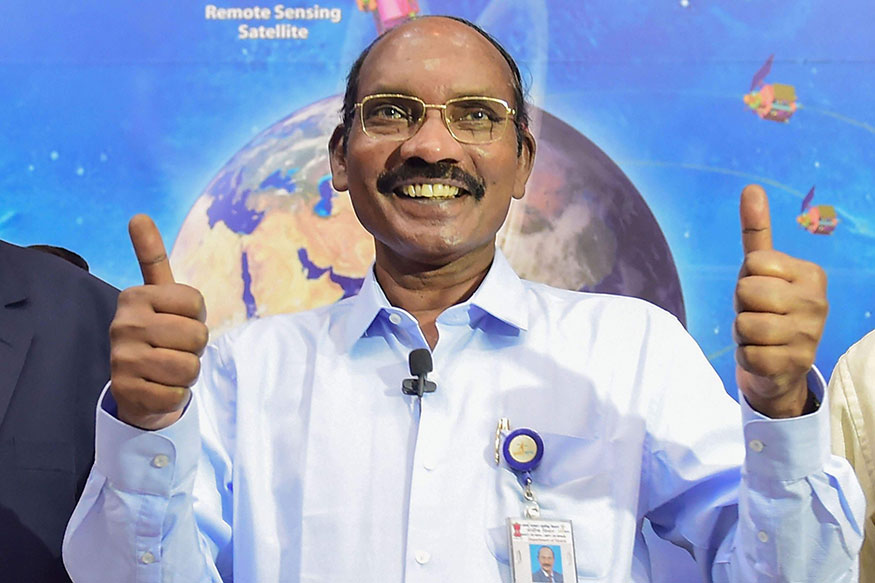The Indian Space Research Organization, or ISRO, announced in June that it plans to launch its own space station by 2030.
去年6月,印度空间研究组织(ISRO)宣布,印度计划在2030年之前实现发射自己的空间站这一目标。
Along with Russia, the United States, and China,
这将使印度成为继俄罗斯、美国和中国之后的
this would make India the fourth country to launch a space station that is solely their own.
第四个发射完全属于他们自己的空间站的国家。
It's an ambitious goal, especially for a country that has yet to send a human being into space.
这是一个十分宏伟的目标,尤其是对印度这样一个至今还未完成载人航天目标的国家来说。
They haven't released any concrete plans on how they'll build their station or what it will look like.
目前,他们尚未公布任何具体的计划,说明他们将如何建设自己的空间站,或者会建成什么样子。
So, what challenges did other nations face when they put their first space stations into orbit?
那么,其他国家在发射他们的第一个空间站时会面临哪些挑战呢?
The Soviet Union launched the first space station ever, Salyut 1, in 1971.
前苏联1971年就发射了世界上第一个空间站——“礼炮1号”空间站。
It was in orbit for 175 days and occupied for 23 before the crew departed.
该空间站在轨道上运行了175天,随后,在太空站停留了23天后宇航员们返回了地面。
Tragically, their return capsule depressurized, and all three crew members perished.
由于返回舱出现泄压事故,三名机组人员不幸全部罹难。
The U.S. S.R.'s next two attempts, Salyut 2 and Kosmos 557, each were crippled after achieving orbit and neither were ever occupied.
接下来,前苏联又进行了两次尝试,也就是“礼炮2号”和“宇宙557号”,两次都是进入轨道后出现了故障,且两次都没有载人。
The U.S. 's first space station, Skylab launched three days after Kosmos 557 in 1973, and as you might have guessed, it was damaged during launch.
美国1973也发射了自己的首个空间站“天空实验室”,时间是“宇宙557号”发射的三天后,你可能已经猜到了,这个空间站发射阶段就出现了故障。
Still, some improvised repairs made Skylab habitable,
尽管如此,经过临时修复,天空实验室又可以载人了,
and it was occupied by three crews before reentering the atmosphere and breaking up in 1979.
后来,该空间站载着3名宇航员再次飞向太空,最终于1979年解体。
Ground controllers attempted to have the debris land in the Indian Ocean, but some of it landed in western Australia.
地面控制人员试图让它的残骸降落在印度洋上,但还是有一些降落在了澳大利亚西部。
While no one was hurt, the Shire of Esperance did fine NASA $400 for littering.
尽管残骸并未伤及当地居民,埃斯佩兰斯郡还是以乱扔垃圾为由对NASA处以了400美元的罚款。
Clearly, a crewed space station is a daunting task to get right on your first try.
载人空间站一次就发射成功显然是十分艰巨的目标。
The next country to launch an independent space station was China in 2011.
继美国之后,中国也踏上了发射独立空间站的道路,时间是2011年。
The school-bus sized Tiangong-1 wasn't meant to be a permanent facility,
校车大小的“天宫1号”的使命本就不是充当一个永久性的空间站,
but a platform to test and master the technologies needed for more ambitious modular station in the future.
而是要充当测试并掌握未来更加远大的模块化空间站所需技术的跳板。
Two crewed missions visited the station in 2012 and 2013, and at that point its mission was essentially done.
2012年到2013年,两个载人航天团队相继访问了这一空间站,至此,“天宫1号”的使命基本告一段落。
But just in case something went wrong with its successor, Tiangong-2,
然而,为预防接下来的“天宫2号”出现问题,
the Chinese decided to put the station into hibernation rather than deorbit it.
中国决定让“天宫1号”进入休眠状态而不是离开其运行轨道。
When they attempted to wake it up again in 2016, they found the station had lost power.
2016年,就在他们试图再次唤醒它时,他们发现,“天宫1号”已经没有了动力。
That meant it was uncontrollable, and where it landed, was up to gravity.
这就意味着它已经失去控制,最终会降落在哪里将完全取决于重力。
Fortunately, Tiangong-1 reentered harmlessly over the southern Pacific in April of 2018.
幸运的是,“天宫1号”于2018年4月安全降落在了南太平洋上空。
Chinese officials bristle at the notion the reentry was uncontrolled,
中国官员不满“天宫1号”重返大气层时已经不受地面控制的看法,
but honestly it just means they join the club of nations whose first space stations weren't 100% flawless missions.
但老实说,这只是意味着,很多国家的首次空间站任务都没有取得100%的成功,中国只是他们中的一员而已。
So far, we're 0 for 3.
到中国为止,我们首次发射成功的概率是3:0。
But we have also had stunning successes with space stations too.
尽管如此,我们还是取得了惊人的成绩。
The International Space Station has been hosting astronauts and doing science since the year 2000.
自2000年以来,国际空间站一直在接待宇航员,空间站上的科学研究也从未停止过。
But the ISS is really something special and it's not a project that any one country can undertake.
然而,国际空间站并非等闲之举,不是谁想承担就承担得了的。
It took the cooperation and funding of space agencies from Russia, the United States, Europe, Japan, and Canada to assemble it in orbit over a decade.
俄罗斯、美国、欧洲、日本和加拿大这么多国家的航天机构通力合作,共同出资都花了十多年的时间才将其组装成功,送上预定轨道。
It took 5 Russian rocket launches plus more than 35 space shuttle missions to haul all its pieces into orbit.
俄罗斯发射了5次火箭,外加将近40架航天飞机才将所有零件送入轨道。

Today, NASA's budget for their share of the operation, maintenance, and research costs total 1.45 billion dollars each year,
到目前为止,NASA每年用在运营、维护和研究美国负责的舱段的预算就达到了14.5亿美元,
which as it happens is reportedly the entire annual budget of ISRO.
据报道,这一金额相当于印度空间研究组织一年的预算。
Clearly a space station that huge is out of the question for any one country.
显然,国际空间站这么大的空间站对任何一个国家来说都是不可能独立完成建造的。
Which brings us back to India.
这就把我们又带回了印度的问题上。
Will they be the only nation to have a totally successful space station on their first go?
他们会成为第一个首次发射空间站就100%成功的国家吗?
Before they even attempt that, they have a lot of work ahead of them.
即便还未开始尝试,他们也还有很多工作要做。
They have yet to launch a human into space with a rocket of their own, though they're inching closer.
他们还需要用自己的火箭将航天员送入太空,尽管这个问题他们已经在缓步落实了。
ISRO is reportedly on track to launch an uncrewed Gaganyaan spacecraft by December of 2020.
据报道,印度计划在2020年12月之前发射一艘“加甘扬号”无人飞船,现在,ISRO正在朝着这一目标奋进。
After a second uncrewed mission, their goal is to launch three astronauts by December 2021.
第二次无人飞船任务结束后,他们设立了2021年12月之前将三名宇航员进入太空的目标。
Once in low-Earth orbit, the three person crew will remain aloft for 5-7 days before returning safely to Earth.
进入近地轨道后,三名工作人员将在高空停留5-7天,然后安全返回地球。
I make it sound so simple, but remember that space flight is never routine.
虽然我把这事儿说得很简单,但请记住,航天飞行从来都没有惯例可循。
There's always a risk, especially when a space program is just getting its wings.
每次都会有风险,尤其是航天计划刚刚起步的时候。
And ISRO has been ambitious and achieved a lot with the resources it has, but they're not immune to failure.
ISRO很有抱负,在其资源允许的情况下也取得了不菲的成绩,但他们并没有金刚不坏之身啊。
Their first attempt at a moon lander crashed into the moon's surface earlier this year.
今年早些时候,他们第一次尝试在月球着陆,着陆器就撞上了月球表面。
So when it comes to their first crewed missions, we've got our fingers and toes crossed that all goes well.
所以,在首次载人航天这个问题上,我们已经在祈祷他们能够一切顺利了。
If the Gaganyaan missions are successful, then ISRO can seriously start to consider building a permanent home above the Earth.
如果“加甘扬号”任务真的成功了,那ISRO可以认真开始考虑在太空建设永久家园了。
If you want to more about what ISRO has been up to,
如果你想了解ISRO一直以来都在做什么,
check out our video on their Chandrayaan-2 mission to the moon that we was made before it launched.
请查看我们在他们发射“月船2号”之前就已经制作过的有关这次登月任务的视频。
Let us know in the comments below if you liked this video and be sure to subscribe to Seeker and I'll see you next time.
大家喜欢这期视频吗?快来评论里告诉我们吧。还有,记得订阅我们的栏目,那我们下期节目再见啦。











